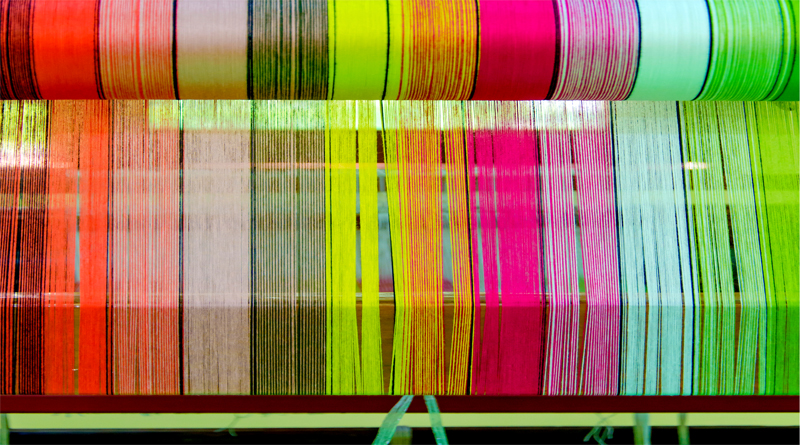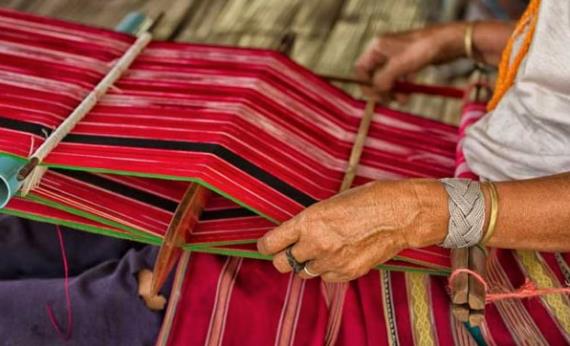





In India, weaving centres are often organised as clusters. Each cluster is made up of shop owners, master-weavers and weavers (master-weavers are highly experienced weavers who create their own designs and send them to other weavers to recreate). Weavesmart works closely with clusters belonging to the smallest of villages in an effort to bring the weaving community online.
Weavesmart currently boasts of more than 20,000 products and has a network of more than 3000 weavers. Amazon India intends to help and empower these weavers associated with Weavesmart by expanding their reach to the millions of Amazon customers across India.
Ms. Nishita Manne CEO, Weavesmart says “Indian weavers produce some of the finest handloom and handcrafted products which have always found resonance with shoppers across the country. Weavesmart was launched with the objective to bring together the weaving community and buyers and provide a platform to showcase authentic and beautifully handcrafted products created by the weavers and artisans. We are delighted to partner with Amazon India as this launch helps to achieve this objective. It will provide the weavers with the opportunity to reach out to millions of Amazon.in customers and expand their sales.”
Incidentally, this is not Amazon’s first venture into Handlooms. In 2016, Amazon launched its “Handloom & Handicraft” store on Amazon.in partnering with various government bodies like DC Handlooms and the Gujarat Tribal Development Dept. a venture that Amazon claims took onboard 1100+ weavers/cooperatives/artisans in 11 states through 35+ workshops, positively impacting 1.5 lakh weaver & artisan households.
Handlooms are one of India’s largest economic activities after agriculture. This sector contributes to 15% of the country’s total cloth production and accounts for 95% of the world’s total hand woven fabrics. However, handlooms is essentially an endangered craft, an official survey published by the Office of the Development Commissioner (Handlooms) suggests that weavers have reduced from 124 lakhs in 1970 to 64 lakhs in 1995 dropping down to 43 lakhs in 2017.
Amazon’s entry, while being promoted as a boost to sellers and buyers alike, does fly in the face of some key assumptions about Handlooms.
For one, the handloom sector promotes the culture of commercially aware consumers. Buying handloom products is an experience for both the buyer and the seller, the weaver. Nowadays, shopping for clothes has become an impersonal experience, where the consumer is not aware of the cloth being used and more importantly how and where it’s being made. Many online sites like Weavesmart hope to overcome this problem by enabling weavers to directly post their weaves online, which would enable consumers to view the product, where its made, how its made and by whom its made.
However, Amazon might undo Weavesmart’s “vision”. Amazon is the world’s largest online retailer, where millions of people throughout the country order thousands of goods online everyday. Amazon in essence promotes the “impersonal” shopping culture more than physical retail stores. This is where things get complicated. Even though Amazon will enable the weavers to access larger crowds, the high demand of items (handlooms cannot mass produce like powerlooms) besides ‘competitive’ pricing offered on Amazon could lead to a situation of buyers simply buying these handlooms like any other fashion item, besides the risk of mass produced ‘fakes’.
“There will be no sensitivity while handling the weavers”, said Ms Sheela Lunkad founder of Direct Create (an online community platform to bridge the gap between makers (artisans, weavers, handicraftsmen) and designers &/or consumers) to Iamrenew.
Ms. Lunkad believes Amazon’s commercialisation will take away the opportunity for people to connect with the weavers. The handloom sector like any other handicraft sector requires a technology system where weavers, designers and consumers meet online, connect and then place orders, thereby enabling weavers to gain larger consumer bases all over the country, without them (or the consumer) having to move. This is something Amazon is not designed to do, in her view.
Amazon promotes a culture of fast-fashion. This culture is the very reason why the fashion/textile industry is the second largest polluter in the world after the oil and gas industry (you can read more about it here). Handlooms create almost no pollution during their production and their minor carbon footprint could very much be the key to fashion being sustainable. However, the Amazon approach of mass-production, low prices and global shipments might actually undo that effort.
The handloom sector actually needs the sort of ‘consumer education’ and personal backing that the Khadi sector, for instance, has been getting, with the Prime Minister himself as the face of the brand effectively.
In the words of Ms. Lunkad, “the need for the future is not mass commercialisation, it’s mass customisation.”
Links: Amazon; Weavesmart; Ministry of Textiles; Direct Create
In a significant move toward advancing green energy and industrial growth in the state, Himachal…
Golabl chemical conglomerate BASF has announced that its now offering the world’s first biomass-balanced polyethersulfone…
In a crucial stint to bolster the biogas sector and sustainable dairying in the country,…
TotalEnergies SE has received approval to proceed with its Middlebrook solar and battery project in…
Andhra Pradesh Chief Minister Chandrababu Naidu has inaugurated the Rs 1,000-crore green hydrogen plant of…
The BITS Pilani has developed an innovative solution for managing landfill leachate, domestic septage, and…